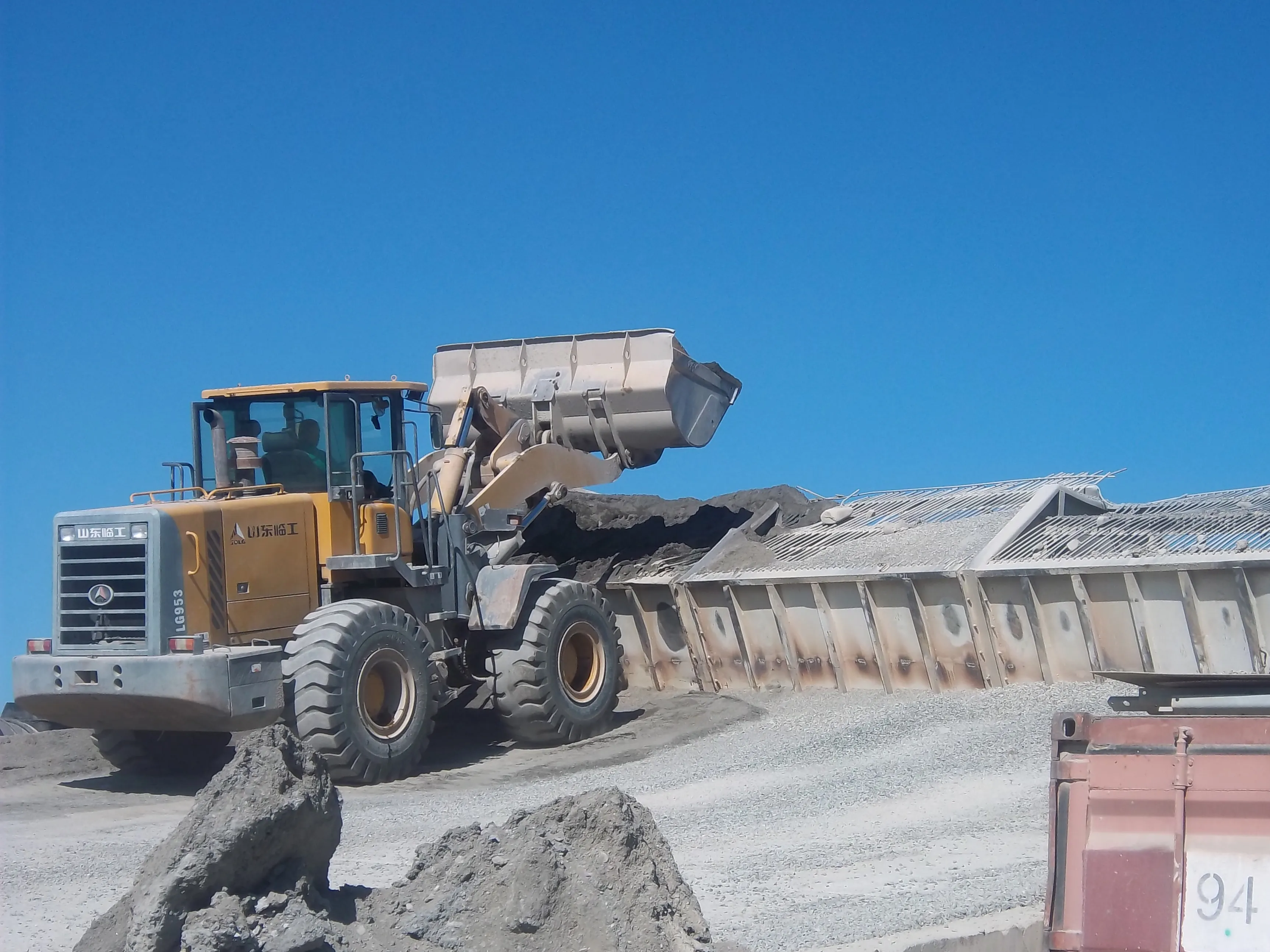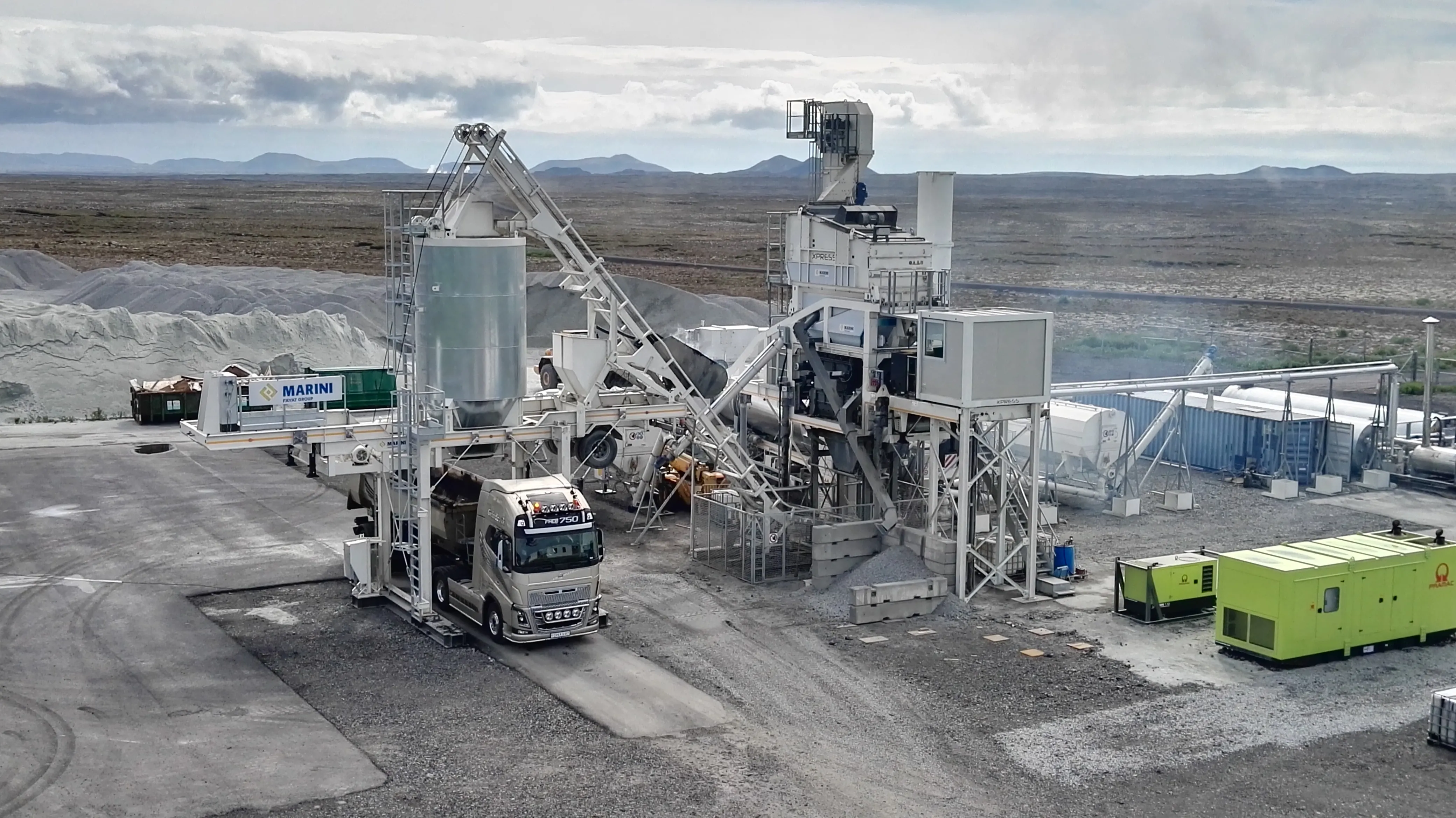A fleet of wheeled loaders from SDLG is playing a key link in the chain for producing concrete at a facility in Georgia. With this equipment HeidelbergCement Georgia and HeidelbergBeton Georgia are proving able to keep pace with an intensive production schedule at a number of concrete production sites across Georgia.
Overall HeidelbergCement Caucasus has seven concrete and two cement manufacturing plants in Georgia that are running SDLG wheeled loaders. The company’s SDLG fleet comprises LG936L, LG953 a
December 8, 2014
Read time: 3 mins

A fleet of wheeled loaders from SDLG is playing a key link in the chain for producing concrete at a facility in Georgia. With this equipment HeidelbergCement Georgia and HeidelbergBeton Georgia are proving able to keep pace with an intensive production schedule at a number of concrete production sites across Georgia.
Overall2551 HeidelbergCement Caucasus has seven concrete and two cement manufacturing plants in Georgia that are running 5316 SDLG wheeled loaders. The company’s SDLG fleet comprises LG936L, LG953 and LG968 models, which are being used for a variety of tasks, including cement loading and aggregates handling from the on-site quarries. HeidelbergCement Caucasus is seeing strong demand with output having to increase accordingly, so reliable equipment is vital.
SDLG branded machines are built in Linyi, China and the manufacturer’s dealer for Georgia is Elite Motors, providing parts and service support. This back-up is said to be crucial to maximise machine uptime in the tough working conditions of the concrete plants. Tyres, buckets and teeth in particular need regular inspections to ensure timely replacements given the tough conditions and abrasive materials being handled.
Elite Motors carries out maintenance checks every 250 hours for HeidelbergCement and HeidelbergBeton, paying particular attention to components such as the driveline to ensure wear is minimal. The firm’s technicians also provide support for the parts and consumables that need to be replaced, such as hydraulic oil, fuel, air filters, engine oil and pins, and fitting OEM-approved parts from SDLG. Elite Motors runs a large service centre at Daba Tsitsamuri and also employs a team of mobile technicians capable of reaching customers across the country.
Although HeidelbergCement’s entrance to the Georgian market is relatively recent, the company is already the leading producer of cement and concrete in the country. Production volume across the company’s two cement plants averages around 1.7 million tonnes of cement and clinker per year. As for its seven concrete locations (with nine production plants) volume averages around 880m3/hour and a three-shift system is in place to maximise output. As a result, the SDLG wheeled loaders are run almost continually.
The smallest of the loaders in the HeidelbergBeton fleet are the three LG936L units, which have a lift capacity of 3tonnes. These lighter loaders are manoeuvrable and powered by a 92 kW WeichaiDeutz engine. The 2m3 bucket on the units can be raised to a dumping height of 3.3m and the maximum breakout force is 96kN. The next largest wheeled loadersin the HeidelbergCement and HeidelbergBeton fleet are the five LG953 units, which have a maximum lift capacity of 5tonnes. With a longer wheelbase than the 3tonne capacity units and greater lifting ability, the LG953 units are powered by a 162kW WeichaiDeutz engine. The 3m3 bucket can be raised to a dumping height of 3.4m and the maximum breakout force is 16kN. Largest of the SDLG units in the Heidelberg fleet are the two LG968 units. They are most often used for aggregate loading. These powerhouses have a 6tonne lift capacity and are among the largest available from SDLG. Maximum breakout force is 210kN and the machine’s 3.5 – 4m3 bucket can be raised up to 3.9m. Power for these larger units comes from a 191kW WeichaiDeutz engine.
Overall
SDLG branded machines are built in Linyi, China and the manufacturer’s dealer for Georgia is Elite Motors, providing parts and service support. This back-up is said to be crucial to maximise machine uptime in the tough working conditions of the concrete plants. Tyres, buckets and teeth in particular need regular inspections to ensure timely replacements given the tough conditions and abrasive materials being handled.
Elite Motors carries out maintenance checks every 250 hours for HeidelbergCement and HeidelbergBeton, paying particular attention to components such as the driveline to ensure wear is minimal. The firm’s technicians also provide support for the parts and consumables that need to be replaced, such as hydraulic oil, fuel, air filters, engine oil and pins, and fitting OEM-approved parts from SDLG. Elite Motors runs a large service centre at Daba Tsitsamuri and also employs a team of mobile technicians capable of reaching customers across the country.
Although HeidelbergCement’s entrance to the Georgian market is relatively recent, the company is already the leading producer of cement and concrete in the country. Production volume across the company’s two cement plants averages around 1.7 million tonnes of cement and clinker per year. As for its seven concrete locations (with nine production plants) volume averages around 880m3/hour and a three-shift system is in place to maximise output. As a result, the SDLG wheeled loaders are run almost continually.
The smallest of the loaders in the HeidelbergBeton fleet are the three LG936L units, which have a lift capacity of 3tonnes. These lighter loaders are manoeuvrable and powered by a 92 kW WeichaiDeutz engine. The 2m3 bucket on the units can be raised to a dumping height of 3.3m and the maximum breakout force is 96kN. The next largest wheeled loadersin the HeidelbergCement and HeidelbergBeton fleet are the five LG953 units, which have a maximum lift capacity of 5tonnes. With a longer wheelbase than the 3tonne capacity units and greater lifting ability, the LG953 units are powered by a 162kW WeichaiDeutz engine. The 3m3 bucket can be raised to a dumping height of 3.4m and the maximum breakout force is 16kN. Largest of the SDLG units in the Heidelberg fleet are the two LG968 units. They are most often used for aggregate loading. These powerhouses have a 6tonne lift capacity and are among the largest available from SDLG. Maximum breakout force is 210kN and the machine’s 3.5 – 4m3 bucket can be raised up to 3.9m. Power for these larger units comes from a 191kW WeichaiDeutz engine.







